
English Blogs
"Let's Learn, Explore, and Connect to the World"

Present Perfect Simple 5
- Tokita Akira
- Basic English Grammar Blog

V. Practical Tips for Usage and Common Mistakes in the Present Perfect Simple
Practical Tips for Effective Usage
 Understanding Time Relevance: Use the Present Perfect Simple for actions that occurred at an unspecified time before now or for situations that started in the past and are still true. Remember, the focus is on the result or relevance to the present.
Understanding Time Relevance: Use the Present Perfect Simple for actions that occurred at an unspecified time before now or for situations that started in the past and are still true. Remember, the focus is on the result or relevance to the present.
 Appropriate Contexts: Utilize this tense when discussing life experiences, changes over time, or completed actions with present relevance.
Appropriate Contexts: Utilize this tense when discussing life experiences, changes over time, or completed actions with present relevance.
 Use with Time Expressions: Familiarize yourself with time expressions commonly used with the Present Perfect Simple, such as ‘ever’, ‘never’, ‘since’, ‘for’, ‘yet’, and ‘already’.
Use with Time Expressions: Familiarize yourself with time expressions commonly used with the Present Perfect Simple, such as ‘ever’, ‘never’, ‘since’, ‘for’, ‘yet’, and ‘already’.
Common Mistakes and Strategies to Avoid Them
 Wrong Verb Form: Ensure you use the past participle form of the verb. Regular verbs typically end in -ed, but many common verbs are irregular and require memorization.
Wrong Verb Form: Ensure you use the past participle form of the verb. Regular verbs typically end in -ed, but many common verbs are irregular and require memorization.
 Incorrect Time References: Avoid using the Present Perfect Simple with specific past time references. Phrases like ‘last year’, ‘in 2010’, or ‘yesterday’ require the Past Simple tense.
Incorrect Time References: Avoid using the Present Perfect Simple with specific past time references. Phrases like ‘last year’, ‘in 2010’, or ‘yesterday’ require the Past Simple tense.
 Overuse: Be cautious of overusing the Present Perfect Simple. Assess if the action or situation genuinely requires this tense or if another tense like the Past Simple or Present Simple is more appropriate.
Overuse: Be cautious of overusing the Present Perfect Simple. Assess if the action or situation genuinely requires this tense or if another tense like the Past Simple or Present Simple is more appropriate.
Distinguishing from Other Tenses
Present Perfect vs. Past Simple: The Past Simple is used for actions completed at a specific time in the past. The Present Perfect Simple is used for actions without a specific time or those affecting the present.
Present Perfect vs. Present Perfect Continuous: The Present Perfect Simple focuses on the result or completion of an action, while the Present Perfect Continuous emphasizes the duration or ongoing nature of the action.
Practice and Application
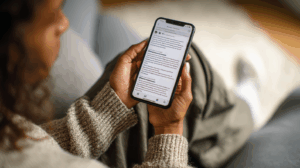 Regular Practice: Incorporate the Present Perfect Simple into your daily conversations and written communication where appropriate.
Regular Practice: Incorporate the Present Perfect Simple into your daily conversations and written communication where appropriate.
 Language Exercises: Engage in exercises that focus on converting sentences from the Past Simple to the Present Perfect Simple and vice versa to understand their differences.
Language Exercises: Engage in exercises that focus on converting sentences from the Past Simple to the Present Perfect Simple and vice versa to understand their differences.
 Reading and Listening Comprehension: Pay attention to the use of the Present Perfect Simple in various texts, movies, and conversations to understand its application in different contexts.
Reading and Listening Comprehension: Pay attention to the use of the Present Perfect Simple in various texts, movies, and conversations to understand its application in different contexts.
Conclusion
 Mastering the Present Perfect Simple tense is essential for expressing actions and experiences relevant to the present. By understanding its proper use and common mistakes, and through regular practice, you can significantly improve your proficiency in English grammar. This understanding not only enhances your grammatical accuracy but also enriches your ability to express experiences and actions with appropriate temporal context.
Mastering the Present Perfect Simple tense is essential for expressing actions and experiences relevant to the present. By understanding its proper use and common mistakes, and through regular practice, you can significantly improve your proficiency in English grammar. This understanding not only enhances your grammatical accuracy but also enriches your ability to express experiences and actions with appropriate temporal context.
Latest Blogs

Present Simple Tense 1
English Blogs “Let’s Learn, Explore, and Connect to the World” Present Simple Tense 1 I. Introduction to the Present Simple Tense in English Mastering the

Present Simple Tense 2
English Blogs “Let’s Learn, Explore, and Connect to the World” Present Simple Tense 2 II. Understanding the Present Simple Tense Definition and Structure At its
Reading comprehension quiz
Check out our books and more!

Comic Collections : A Compilation of Daily Professional and Casual Conversations (Book 3)
Discover the joy of conversation with “Comic Collections: A Compilation of Daily Professional and Casual Conversations,” a whimsically illustrated comic book that transforms talking into an adventure. Ideal for those eager to polish their chatting skills, this light-hearted guide is a trove of insights presented in a uniquely entertaining format.
Check out our Blogs!
Read our everyday blogs and gain new knowledge, skills, and inspiration to support your learning journey here in SEKAEL.


Explore Mental Health Blogs to gain insights and tips on self-care, emotional balance, and personal well-being.
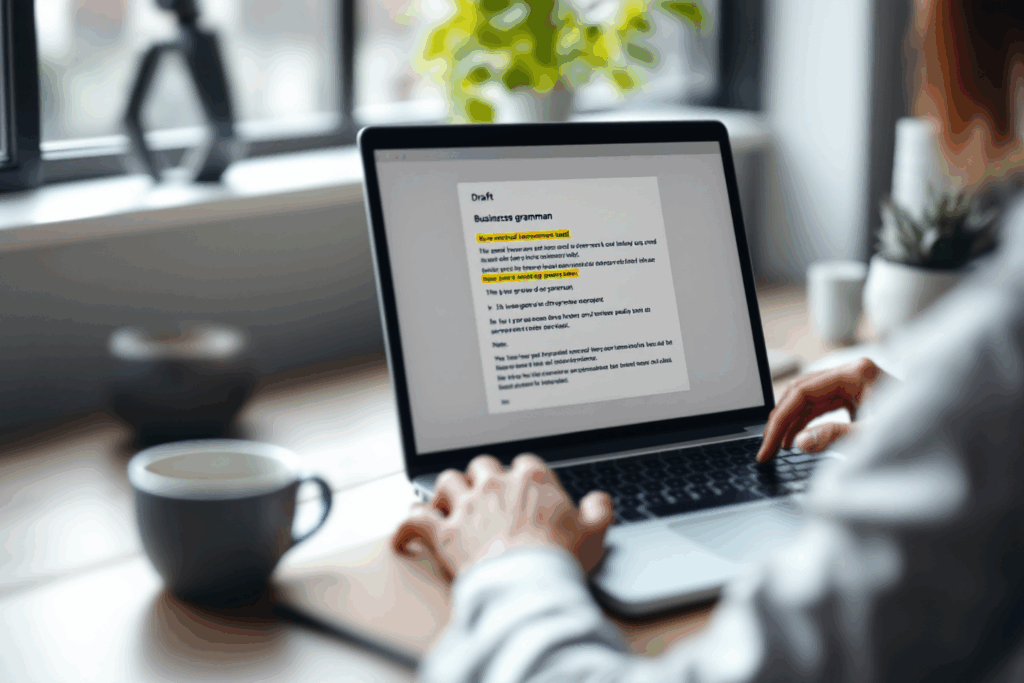



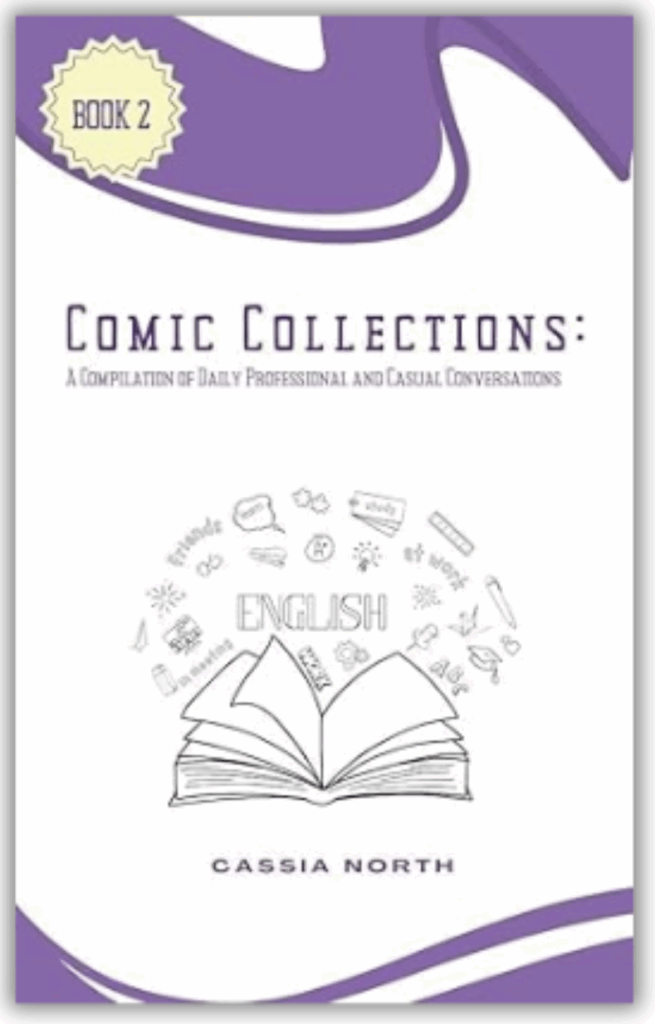





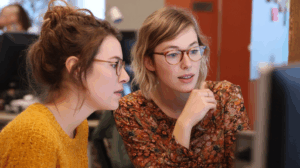


 Effectively forming questions and negatives in the Present Perfect Simple is crucial for asking about experiences, discussing completed actions, and describing ongoing effects. Understanding these structures adds depth and versatility to your English communication, particularly in expressing actions and experiences relevant to the present.
Effectively forming questions and negatives in the Present Perfect Simple is crucial for asking about experiences, discussing completed actions, and describing ongoing effects. Understanding these structures adds depth and versatility to your English communication, particularly in expressing actions and experiences relevant to the present.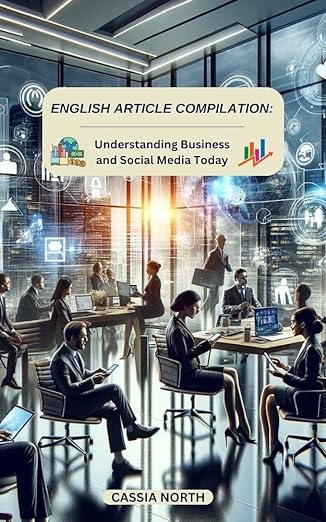

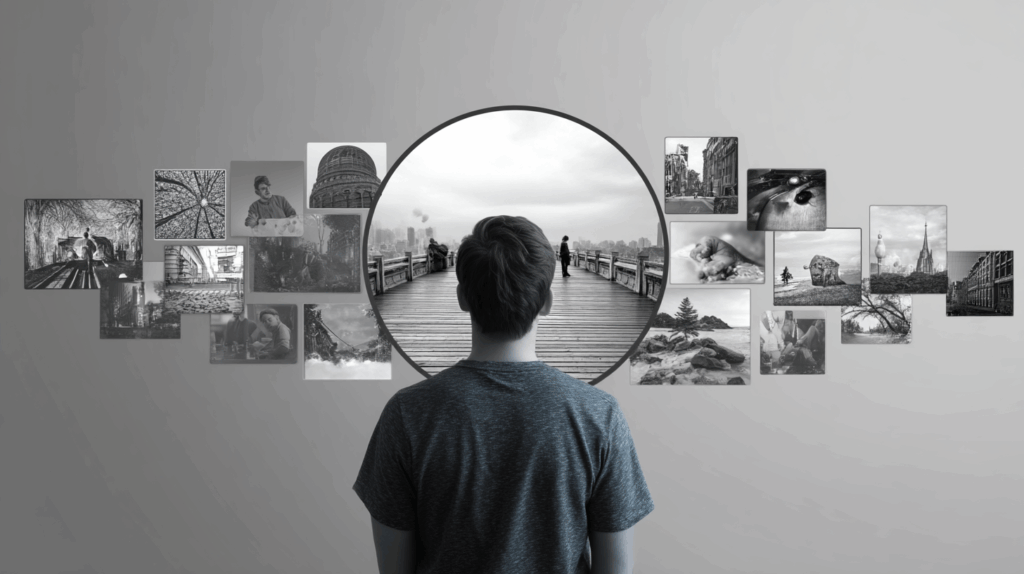









 The Present Perfect Simple tense is a key element in English grammar, allowing speakers to express a range of actions and states related to past experiences, changes over time, and recently completed actions. Its versatility makes it essential for discussing past actions in a way that emphasizes their relevance to the present. In the next sections, we will explore forming questions and negatives, and practical usage tips.
The Present Perfect Simple tense is a key element in English grammar, allowing speakers to express a range of actions and states related to past experiences, changes over time, and recently completed actions. Its versatility makes it essential for discussing past actions in a way that emphasizes their relevance to the present. In the next sections, we will explore forming questions and negatives, and practical usage tips.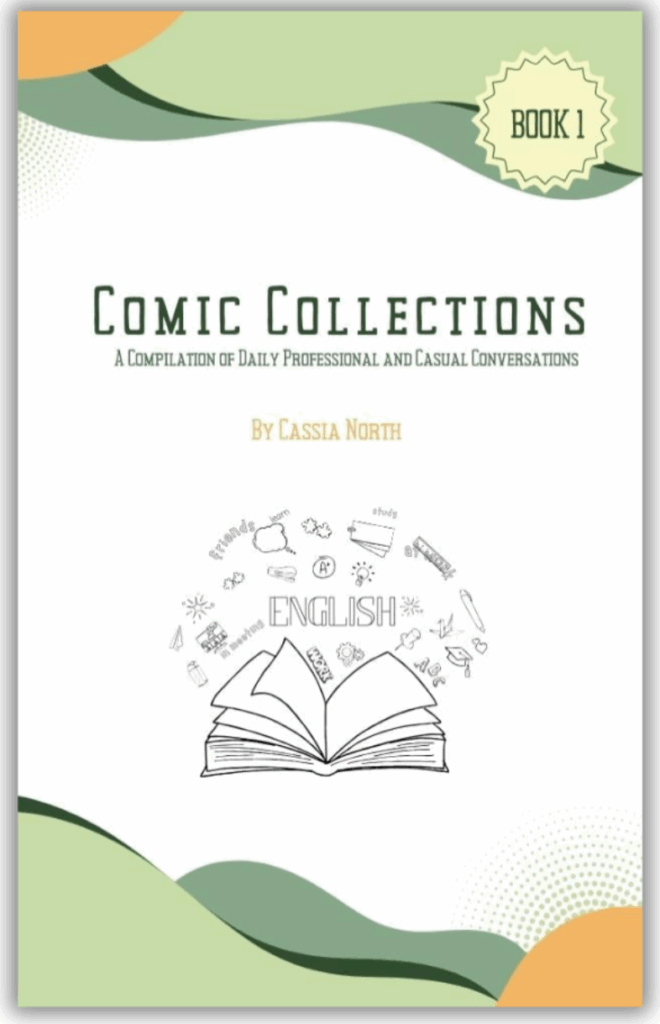












 The Present Perfect Simple tense is essential for expressing a variety of actions and states in English, particularly those linking the past to the present. Its correct usage reflects not just a grasp of grammar but also an understanding of the nuances of English communication. In the following sections, we will delve into its specific uses, how to form questions and negatives, and practical tips for effective usage.
The Present Perfect Simple tense is essential for expressing a variety of actions and states in English, particularly those linking the past to the present. Its correct usage reflects not just a grasp of grammar but also an understanding of the nuances of English communication. In the following sections, we will delve into its specific uses, how to form questions and negatives, and practical tips for effective usage.
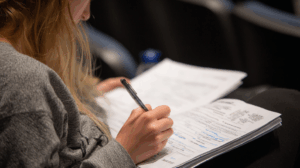
 At its core, the Present Perfect Simple tense serves to link actions or events that occurred at an unspecified time in the past with the present. Unlike the simple past, which places actions firmly in the past, the Present Perfect Simple keeps these actions relevant to the current moment. This connection is crucial in conversations about life experiences, changes, accomplishments, and ongoing situations.
At its core, the Present Perfect Simple tense serves to link actions or events that occurred at an unspecified time in the past with the present. Unlike the simple past, which places actions firmly in the past, the Present Perfect Simple keeps these actions relevant to the current moment. This connection is crucial in conversations about life experiences, changes, accomplishments, and ongoing situations. What sets the Present Perfect Simple apart in English is its ability to express actions without specifying the exact time they occurred. This is particularly important in English, as it reflects the language’s focus on the state of an action rather than its specific timeline. It’s a tense that adds depth to conversations, allowing speakers to discuss their experiences and changes in their lives in a way that connects the past to the present.
What sets the Present Perfect Simple apart in English is its ability to express actions without specifying the exact time they occurred. This is particularly important in English, as it reflects the language’s focus on the state of an action rather than its specific timeline. It’s a tense that adds depth to conversations, allowing speakers to discuss their experiences and changes in their lives in a way that connects the past to the present. One of the most compelling uses of the Present Perfect Simple is in discussing life experiences. Phrases like “I have traveled” or “I have learned” open doors to deeper conversations about personal growth, experiences, and the journey of life. This tense allows for an exploration of one’s past not as a distant memory, but as an integral part of who they are in the present.
One of the most compelling uses of the Present Perfect Simple is in discussing life experiences. Phrases like “I have traveled” or “I have learned” open doors to deeper conversations about personal growth, experiences, and the journey of life. This tense allows for an exploration of one’s past not as a distant memory, but as an integral part of who they are in the present. In describing changes over time, the Present Perfect Simple is unparalleled. It helps in illustrating how people, places, or situations have evolved up to the present. When someone says, “The city has changed,” it invites an understanding of the city’s transformation over an undefined period, emphasizing the current state rather than the historical details.
In describing changes over time, the Present Perfect Simple is unparalleled. It helps in illustrating how people, places, or situations have evolved up to the present. When someone says, “The city has changed,” it invites an understanding of the city’s transformation over an undefined period, emphasizing the current state rather than the historical details. For learners of English, grasping the Present Perfect Simple is both a challenge and an opportunity. It requires a shift in thinking from time-focused tenses to a more fluid understanding of time and action. Mastering this tense is often seen as a milestone in English proficiency, as it allows for more nuanced and sophisticated expression.
For learners of English, grasping the Present Perfect Simple is both a challenge and an opportunity. It requires a shift in thinking from time-focused tenses to a more fluid understanding of time and action. Mastering this tense is often seen as a milestone in English proficiency, as it allows for more nuanced and sophisticated expression. The Present Perfect Simple tense is a vital tool in the English language, allowing speakers to connect their past actions and experiences to the present. Its mastery is essential for anyone looking to express themselves fully in English, as it provides a way to discuss experiences, changes, and ongoing situations in a contextually rich and meaningful way. As we delve deeper into this tense, we’ll explore its formation, uses, and the nuances that make it an indispensable part of English communication.
The Present Perfect Simple tense is a vital tool in the English language, allowing speakers to connect their past actions and experiences to the present. Its mastery is essential for anyone looking to express themselves fully in English, as it provides a way to discuss experiences, changes, and ongoing situations in a contextually rich and meaningful way. As we delve deeper into this tense, we’ll explore its formation, uses, and the nuances that make it an indispensable part of English communication.


 Future Plans Discussion: Engage in conversations or writing exercises where you discuss your future plans using ‘be going to’. Talk about your next vacation, career goals, or weekend plans.
Future Plans Discussion: Engage in conversations or writing exercises where you discuss your future plans using ‘be going to’. Talk about your next vacation, career goals, or weekend plans.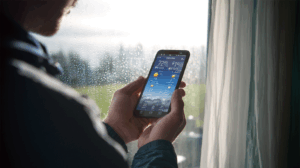 Predicting Future Events: Practice making predictions about future events based on current evidence. This could involve discussing weather changes, outcomes of sports events, or global trends.
Predicting Future Events: Practice making predictions about future events based on current evidence. This could involve discussing weather changes, outcomes of sports events, or global trends. Role-playing Scenarios: Participate in role-playing exercises that require planning future actions. For example, simulate planning a trip, organizing an event, or making decisions about future studies or career moves.
Role-playing Scenarios: Participate in role-playing exercises that require planning future actions. For example, simulate planning a trip, organizing an event, or making decisions about future studies or career moves. Daily Usage: Try to incorporate ‘be going to’ into your daily conversations. This could be as simple as telling a friend what you are going to do after work or discussing your plans for the next holiday.
Daily Usage: Try to incorporate ‘be going to’ into your daily conversations. This could be as simple as telling a friend what you are going to do after work or discussing your plans for the next holiday. Journal Entries: Write journal entries about your future plans using ‘be going to’. Reflect on what you plan to achieve in the coming days, months, or years.
Journal Entries: Write journal entries about your future plans using ‘be going to’. Reflect on what you plan to achieve in the coming days, months, or years. Social Media Posts: Use social media to share your future plans or predictions about specific topics, employing the ‘be going to’ construction.
Social Media Posts: Use social media to share your future plans or predictions about specific topics, employing the ‘be going to’ construction. YouTube Channels: Watch educational videos on channels dedicated to English learning, particularly those that focus on verb tenses and future constructions.
YouTube Channels: Watch educational videos on channels dedicated to English learning, particularly those that focus on verb tenses and future constructions. Podcasts and Audiobooks: Listen to podcasts or audiobooks where speakers often discuss future plans or predictions. Pay attention to how ‘be going to’ is used in different contexts.
Podcasts and Audiobooks: Listen to podcasts or audiobooks where speakers often discuss future plans or predictions. Pay attention to how ‘be going to’ is used in different contexts. Movies and TV Shows: Watch English movies and shows, noting how characters talk about their future plans or make predictions.
Movies and TV Shows: Watch English movies and shows, noting how characters talk about their future plans or make predictions. Short Stories: Write short stories where characters are planning future actions. Focus on using ‘be going to’ to express their intentions and plans.
Short Stories: Write short stories where characters are planning future actions. Focus on using ‘be going to’ to express their intentions and plans. Future Scenarios: Create scenarios set in the future and describe them using ‘be going to’. This could be about technological advancements, environmental changes, or personal life in the future.
Future Scenarios: Create scenarios set in the future and describe them using ‘be going to’. This could be about technological advancements, environmental changes, or personal life in the future. Expanding your practice with the ‘be going to’ construction is key to mastering its use in expressing future plans and predictions. Through a combination of speaking, writing, listening, and engaging with educational resources, you can enhance your grasp of this essential aspect of English grammar. Regular practice and application in varied contexts will build your confidence and fluency in using ‘be going to’ for future intentions.
Expanding your practice with the ‘be going to’ construction is key to mastering its use in expressing future plans and predictions. Through a combination of speaking, writing, listening, and engaging with educational resources, you can enhance your grasp of this essential aspect of English grammar. Regular practice and application in varied contexts will build your confidence and fluency in using ‘be going to’ for future intentions.

 Planned Future Actions: Reserve ‘be going to’ for actions you have planned or decided upon. This helps differentiate it from spontaneous decisions, which are typically expressed with ‘will’.
Planned Future Actions: Reserve ‘be going to’ for actions you have planned or decided upon. This helps differentiate it from spontaneous decisions, which are typically expressed with ‘will’. Predictions Based on Evidence: Use ‘be going to’ for predictions when there is observable evidence. For example, use it when commenting on imminent events based on what you see or know.
Predictions Based on Evidence: Use ‘be going to’ for predictions when there is observable evidence. For example, use it when commenting on imminent events based on what you see or know. Expressing Certainty: Opt for ‘be going to’ when you want to convey a sense of certainty about your plans or predictions.
Expressing Certainty: Opt for ‘be going to’ when you want to convey a sense of certainty about your plans or predictions. Confusing with ‘Will’: Avoid using ‘be going to’ for spontaneous decisions or uncertain predictions. Remember, ‘will’ is better suited for those contexts.
Confusing with ‘Will’: Avoid using ‘be going to’ for spontaneous decisions or uncertain predictions. Remember, ‘will’ is better suited for those contexts. Incorrect Verb Form: Always follow ‘going to’ with the base form of the main verb. A frequent mistake is using the -ing form or the past tense.
Incorrect Verb Form: Always follow ‘going to’ with the base form of the main verb. A frequent mistake is using the -ing form or the past tense. Overusing ‘Be Going To’: Be mindful not to overuse this construction. It’s not suitable for every future scenario, such as scheduled events or habitual future actions.
Overusing ‘Be Going To’: Be mindful not to overuse this construction. It’s not suitable for every future scenario, such as scheduled events or habitual future actions.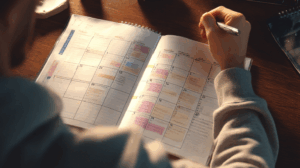 Understanding the context is key in choosing between ‘be going to’, ‘will’, and other future forms. Consider the nature of your action or prediction – is it a firm plan, a spontaneous decision, or a scheduled event?
Understanding the context is key in choosing between ‘be going to’, ‘will’, and other future forms. Consider the nature of your action or prediction – is it a firm plan, a spontaneous decision, or a scheduled event?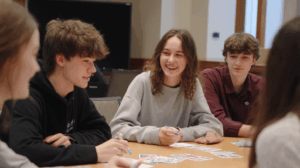 Role-Playing Exercises: Engage in role-plays that involve making plans or predictions about the future. This can help you practice using ‘be going to’ in appropriate contexts.
Role-Playing Exercises: Engage in role-plays that involve making plans or predictions about the future. This can help you practice using ‘be going to’ in appropriate contexts. Writing Practice: Write about your future plans or predictions using ‘be going to’. This can be through journal entries, emails, or social media posts.
Writing Practice: Write about your future plans or predictions using ‘be going to’. This can be through journal entries, emails, or social media posts. The nuances in using ‘be going to’ can often be subtle. Paying attention to native speakers and how they use this construction can provide valuable insights into its correct usage.
The nuances in using ‘be going to’ can often be subtle. Paying attention to native speakers and how they use this construction can provide valuable insights into its correct usage. Along with mastering ‘be going to’, expand your vocabulary with phrases and expressions that are commonly used to talk about the future. This will enhance your overall ability to discuss future plans and intentions.
Along with mastering ‘be going to’, expand your vocabulary with phrases and expressions that are commonly used to talk about the future. This will enhance your overall ability to discuss future plans and intentions. ‘Mastering ‘be going to’ for expressing future plans and intentions is a vital skill in English. By understanding its correct usage and being aware of common mistakes, you can significantly improve your ability to communicate about the future. Regular practice and attention to contextual cues will help you use this construction effectively.
‘Mastering ‘be going to’ for expressing future plans and intentions is a vital skill in English. By understanding its correct usage and being aware of common mistakes, you can significantly improve your ability to communicate about the future. Regular practice and attention to contextual cues will help you use this construction effectively.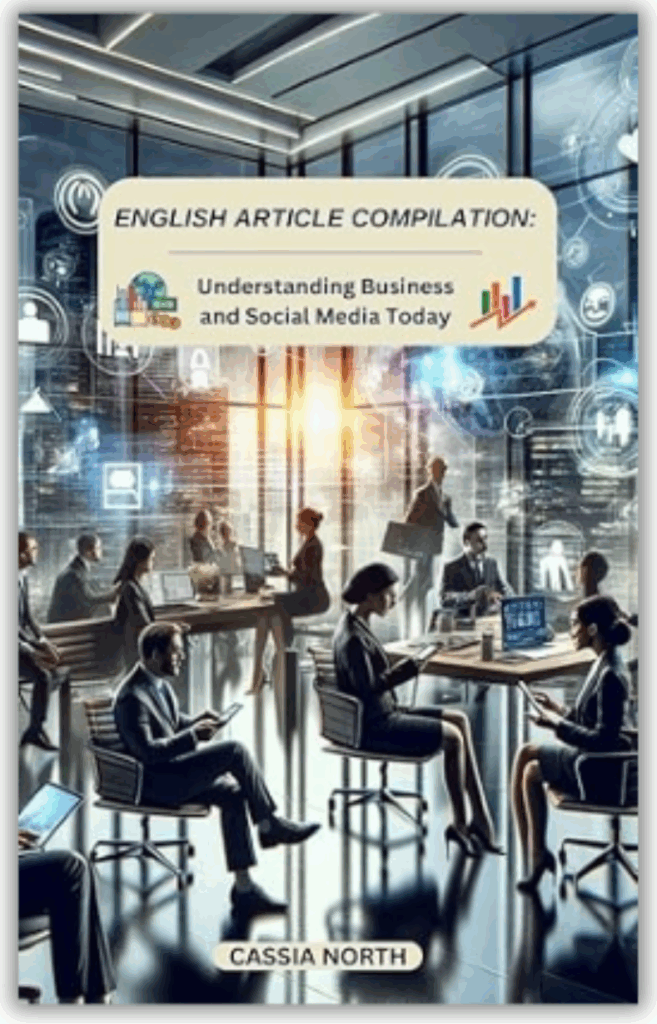



 Diversification of Skill Set:
Diversification of Skill Set: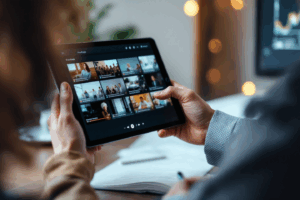 Enhanced Resume and Portfolio:
Enhanced Resume and Portfolio: Social Media and Digital Marketing Roles:
Social Media and Digital Marketing Roles: Cross-Functional Collaboration:
Cross-Functional Collaboration: Freelance and Consulting Opportunities:
Freelance and Consulting Opportunities: Evolving with Industry Trends:
Evolving with Industry Trends:
 By integrating video editing skills into your marketing strategies, you can create content that not only captivates your audience but also drives tangible business results. Whether it’s through social media, advertising, or customer engagement, the power of a well-edited video in the business context is undeniable.
By integrating video editing skills into your marketing strategies, you can create content that not only captivates your audience but also drives tangible business results. Whether it’s through social media, advertising, or customer engagement, the power of a well-edited video in the business context is undeniable. For entrepreneurs and startups, video editing is more than a skill—it’s a strategic tool that can drive business success. In the entrepreneurial journey, where resources are often limited and impact is crucial, being able to produce high-quality videos in-house can be a game-changer. Here’s how video editing plays a vital role in entrepreneurship:
For entrepreneurs and startups, video editing is more than a skill—it’s a strategic tool that can drive business success. In the entrepreneurial journey, where resources are often limited and impact is crucial, being able to produce high-quality videos in-house can be a game-changer. Here’s how video editing plays a vital role in entrepreneurship: For the modern entrepreneur, video editing is not just a way to cut costs; it’s a powerful strategy to communicate your vision, engage with your audience, and build a lasting brand in the competitive business landscape.
For the modern entrepreneur, video editing is not just a way to cut costs; it’s a powerful strategy to communicate your vision, engage with your audience, and build a lasting brand in the competitive business landscape.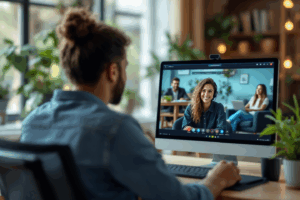 Flexibility in Remote Roles:
Flexibility in Remote Roles: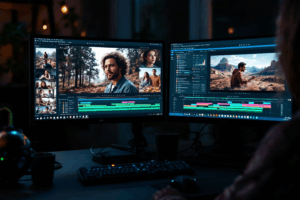 Freelance Video Editing Opportunities:
Freelance Video Editing Opportunities: Building a Freelance Portfolio:
Building a Freelance Portfolio: Expanding Client Services:
Expanding Client Services: Networking and Collaboration:
Networking and Collaboration: Online Content Creation:
Online Content Creation: Skill Development and Up-to-Date Knowledge:
Skill Development and Up-to-Date Knowledge:
 In corporate communication and training, video editing is not just a way of packaging content; it’s a means to ensure messages are delivered effectively, learning is facilitated, and engagement is maximized. For professionals in these fields, video editing skills are becoming increasingly essential.
In corporate communication and training, video editing is not just a way of packaging content; it’s a means to ensure messages are delivered effectively, learning is facilitated, and engagement is maximized. For professionals in these fields, video editing skills are becoming increasingly essential. As we conclude this exploration into the multifaceted role of video editing in professional settings, it’s clear that this skill is more than just an artistic endeavor. It’s a critical tool in today’s digital-first world, essential for enhancing career prospects, boosting business growth, and improving communication and training effectiveness.
As we conclude this exploration into the multifaceted role of video editing in professional settings, it’s clear that this skill is more than just an artistic endeavor. It’s a critical tool in today’s digital-first world, essential for enhancing career prospects, boosting business growth, and improving communication and training effectiveness. Whether you are a budding entrepreneur, a freelancer, a corporate professional, or someone looking to upskill in the digital age, investing time in learning video editing can yield significant returns. The ability to edit videos skillfully opens up new opportunities for career advancement, creative expression, and business innovation.
Whether you are a budding entrepreneur, a freelancer, a corporate professional, or someone looking to upskill in the digital age, investing time in learning video editing can yield significant returns. The ability to edit videos skillfully opens up new opportunities for career advancement, creative expression, and business innovation.

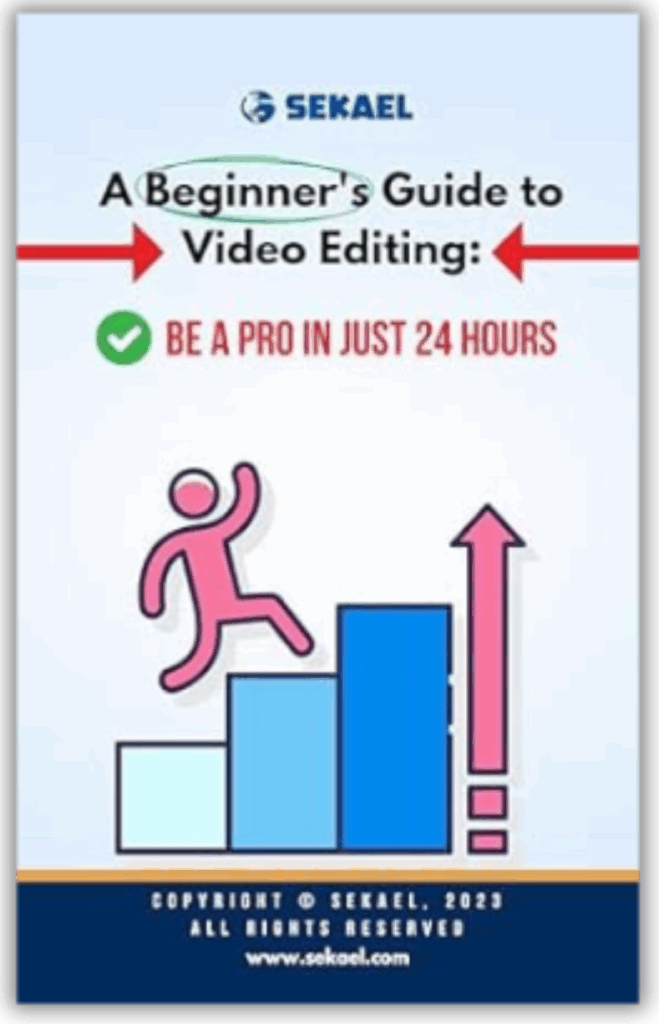




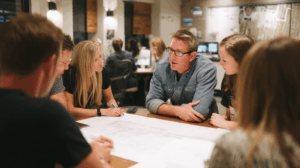







 Mastering the formation of questions and negatives using the ‘be going to’ construction is essential for expressing inquiries and negations regarding future plans and expectations. Understanding these structures enriches your ability to discuss and negotiate future scenarios with clarity and precision in English.
Mastering the formation of questions and negatives using the ‘be going to’ construction is essential for expressing inquiries and negations regarding future plans and expectations. Understanding these structures enriches your ability to discuss and negotiate future scenarios with clarity and precision in English.
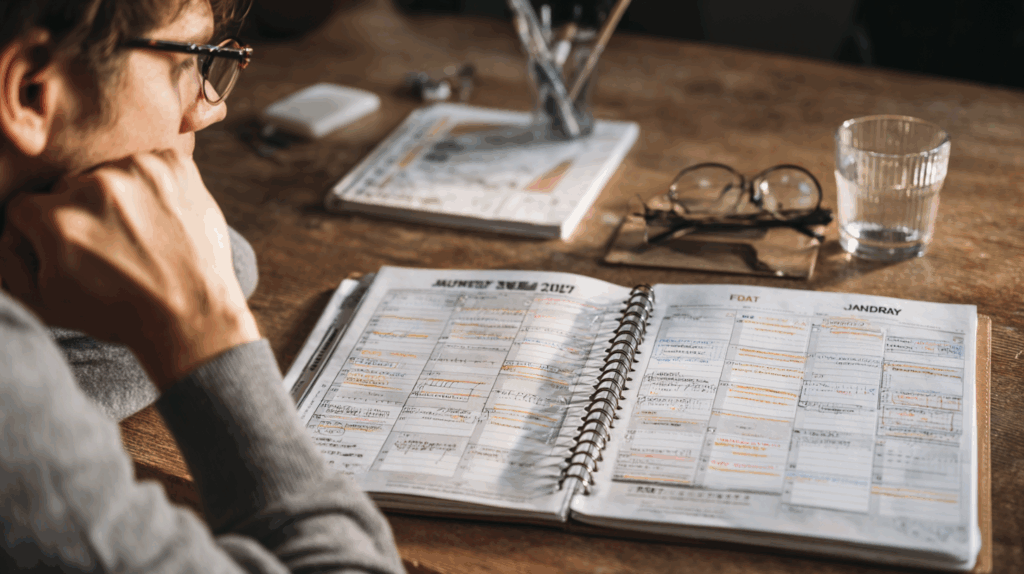

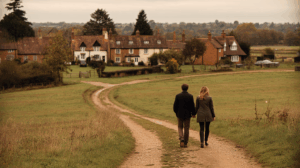




 The choice to use ‘be going to’ often reflects more than just a grammatical decision; it involves the speaker’s perspective on the certainty and nature of the future event. It suggests a future that, in the speaker’s view, is almost already set in motion.
The choice to use ‘be going to’ often reflects more than just a grammatical decision; it involves the speaker’s perspective on the certainty and nature of the future event. It suggests a future that, in the speaker’s view, is almost already set in motion. In different cultural and linguistic contexts, the nuances of indicating future intentions can vary. In English, ‘be going to’ carries with it a sense of personal agency and a degree of certainty, making it a distinctive feature of expressing future plans.
In different cultural and linguistic contexts, the nuances of indicating future intentions can vary. In English, ‘be going to’ carries with it a sense of personal agency and a degree of certainty, making it a distinctive feature of expressing future plans. The ‘be going to’ construction is not just a way to speak about the future; it is a tool that reflects planning, certainty, and sometimes the inevitability of future events. Its correct usage is therefore pivotal in English communication, particularly in contexts where clarity about future intentions is essential. As we continue, we will explore how to form questions and negatives with ‘be going to’, along with common mistakes and tips for effective usage.
The ‘be going to’ construction is not just a way to speak about the future; it is a tool that reflects planning, certainty, and sometimes the inevitability of future events. Its correct usage is therefore pivotal in English communication, particularly in contexts where clarity about future intentions is essential. As we continue, we will explore how to form questions and negatives with ‘be going to’, along with common mistakes and tips for effective usage.